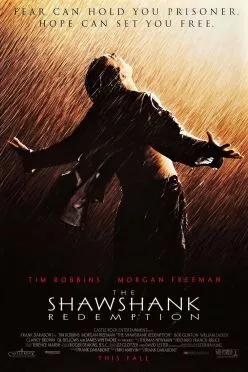Historical accuracy of The Shawshank Redemption

Historical accuracy of The Shawshank Redemption

Characters
Andy Dufresne
Andy Dufresne is a fictional character created by Stephen King for his novella. He is the protagonist whose resilience and eventual escape drive the plot.
Ellis "Red" Redding
Red is a fictional character, serving as the narrator and Andy's closest friend within Shawshank. His character arc explores themes of institutionalization and hope.
Warden Samuel Norton
Warden Norton is a fictional antagonist representing corruption and hypocrisy within the prison system. While prison corruption existed, Norton is a specific invention for the story.
Captain Byron Hadley
Hadley is a fictional character embodying the brutality and abuse of power some prison guards wielded. His actions are plot devices within the fictional narrative.
Brooks Hatlen
Brooks is a fictional character whose story tragically illustrates the concept of institutionalization – being unable to cope with life outside prison after decades inside.
Tommy Williams
Tommy is a fictional character whose arrival provides crucial information about Andy's case and becomes a catalyst for later plot developments, including his murder orchestrated by the warden.
More characters
Heywood
Heywood is one of the fictional inmates in Red's circle of friends.
Boggs Diamond
Boggs is a fictional inmate representing the predatory violence and sexual assault present within prisons. "The Sisters" are also fictional.
Story
Andy convicted for murdering wife/lover
This inciting incident is entirely fictional, created for the novella and film.
Andy's decades-long imprisonment
Andy's specific sentence and time served are part of the fictional narrative.
Brutality from guards (Hadley)
While Hadley is fictional, the portrayal of guard brutality and abuse of power reflects documented realities within prison systems during the mid-20th century and beyond.
Corruption among prison officials (Norton)
Warden Norton's specific money laundering scheme is fictional, but corruption among prison administrators (embezzlement, exploitation of labor) was and remains a real issue.
Sexual assault by inmates ("The Sisters")
The threat and reality of sexual violence among inmates depicted in the film reflect a harsh reality of prison life, though "The Sisters" gang is fictional.
Andy's financial work for guards/warden
Andy's specific role utilizing his banking skills for the staff is part of the fictional plot. However, inmates using skills to gain favor or engage in prison economies is plausible.
Building the prison library
Andy's specific effort to build and expand the library is fictional, but prison libraries and inmate efforts to improve conditions (sometimes facing administrative resistance) are real phenomena.
Brooks's release and suicide
Brooks's story is fictional but powerfully illustrates the real psychological phenomenon of institutionalization, where long-term inmates struggle or fail to adapt to life outside prison.
Tommy reveals info proving Andy's innocence
This plot point is specific to the fictional narrative, driving the conflict with the warden.
Warden has Tommy murdered
Warden Norton orchestrating Tommy's murder is a fictional event demonstrating the extent of his corruption and ruthlessness within the story.
Andy's elaborate escape through tunnel
Andy's specific method of escape (rock hammer, tunnel hidden by poster, crawling through sewage) is a famous, but entirely fictional, element from Stephen King's novella. Prison escapes occur, but rarely like this.
Exposing the Warden's corruption
Andy sending evidence to the newspaper is the fictional climax resolving the antagonist plotline.
Red's parole hearing struggles/release
Red's repeated parole denials and eventual success, along with his initial struggles adjusting outside, realistically portray the parole process and the challenges faced by long-serving inmates upon release.
Andy and Red reunite in Mexico
The hopeful ending where the friends reunite on a beach in Zihuatanejo is the fictional resolution to their story.
Setting
Mid-20th Century Prison (c. 1947-1967)
The film effectively captures the general atmosphere, routines, and social structure of a large, state-run maximum-security prison during this period in American history.
Shawshank State Penitentiary (Architecture)
Though fictional, the prison was filmed at the real Ohio State Reformatory, whose imposing Romanesque/Gothic architecture lends significant visual authenticity and atmosphere appropriate for the era depicted.
Prison routines and conditions
Depicts aspects like cell blocks, mess hall, yard time, work details (laundry, license plates), solitary confinement, and inmate interactions in a way generally consistent with portrayals of period prisons.
Costumes (Prison uniforms, civilian clothes)
The prison uniforms (denim, later grey) and the civilian clothing shown in flashbacks and post-release scenes accurately reflect the changing styles from the 1940s through the 1960s.
Period technology and props
Cars, music (records played over PA), movie posters (Rita Hayworth, Marilyn Monroe, Raquel Welch), tools, and other props accurately represent the different time periods spanned by the film.
Maine setting (implied)
The story is set in Maine, but filmed primarily in Ohio. The visual setting mainly serves as a generic North American backdrop rather than specifically evoking Maine.
Psychological effects of incarceration
The film is widely praised for its realistic portrayal of the long-term psychological impacts of imprisonment, such as institutionalization (Brooks, Red) and the struggle to maintain hope (Andy).
